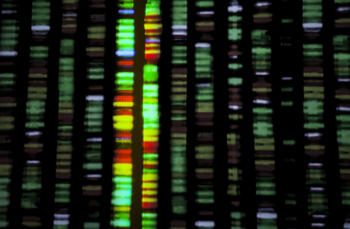New antibiotics needed: Neisseria gonorrhoeae
Posted on July 15, 2019 by Laura Cox
In 2017, the World Health Organization (WHO) published the ’12 Priority Pathogens’: a list of twelve microbes that are becoming increasingly resistant to current antimicrobials. These twelve pathogens are thought by WHO to pose the greatest threat to human health.
Neisseria gonorrhoeae

Professor Albert Neisser
Discovered by the German physician Albert Neisser, Neisseria gonorrhoeae is the bacterium that causes the infection gonorrhoea. Gonorrhoea is one of the most common sexually transmitted infections (STIs) worldwide and can lead to serious complications when not treated quickly.
Reports of multi-drug resistant ‘super gonorrhoea’ infections have been ongoing in the UK since 2014. As resistance rises, fewer treatment options are available, meaning there is a risk of front-line antibiotics becoming obsolete for N. gonorrhoeae infections.
Rapid resistance
Following the discovery of sulfonamides in 1935, there was finally a way to treat gonorrhoea using antimicrobials. Originally, sulfonamides could cure as many as 90% of gonorrhoea infections. Less than ten years later, in 1944, over 90% of gonococcal strains were resistant to sulfonamide antibiotics.
New antibiotics were discovered and developed, and antibiotic treatment of N. gonorrhoeae infections evolved with new treatment options readily available. Unfortunately, antibiotic discovery slowed down after the 1960s, but resistance to antimicrobials did not slow down. Over the past 30 years, gonorrhoea treatment has become more complex with multiple antimicrobials being used at once to control the infection. As resistance continues to spread throughout N. gonorrhoeae populations, effective treatment options are dwindling.
According to WHO guidelines, as soon as more than 5% of infections are resistant to a particular antibiotic, then that treatment is no longer seen as effective and an alternative antimicrobial should be used. Currently, there are still antibiotics which can be used to treat over 95% of gonorrhoeal infections, but history shows that this pathogen is quick to adapt, and researchers are concerned that in the longer-term, it may not be possible to control the disease.

Genomic insights
Whole genome sequencing, the complete sequencing of a bacterium’s DNA, has improved the understanding of the genes which code for antimicrobial resistance. As researchers have sequenced more and more bacteria around the world, they have been able to create a clearer picture of where resistance has developed, and how gonorrhoea has spread.
An understanding of the genes which cause resistance has helped researchers to identify targets for vaccination, which may be a more effective way to eradicate such a rapidly-evolving pathogen. As some researchers work to try and produce a bacteria vaccine, others are searching for new antimicrobial drugs. With predictions that the current therapy could become obsolete within the next 15 years, it is a race against time in which hopefully additional information provided by genomic sequencing will give scientists the edge over gonorrhoea.
Using genomics to understand antimicrobial resistance and transmission in Neisseria gonorrhoeae is the sixth review in the New Antibiotics Needed collection in Microbial Genomics. Written by Leonor Sánchez-Busó and Simon Harris from the Wellcome Trust Sanger Institute, the review discusses past, present and future treatment options for the disease, and how genomics can help researchers understand the ever-changing landscape of antimicrobial resistance in gonorrhoeal populations.

